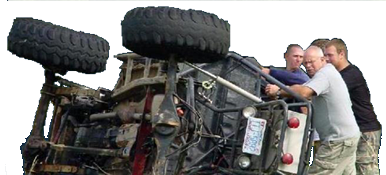ESAB Corecast 8600, is a specially engineered wire for welding cast. It is a cored wire, that uses a 98/2 (argon/oxygen, yes, oxygen) mix. And since it's also $600 for a 15lb spool, unless you're using the hell out of it, not worth it. And when I called ESAB to get some ballpark parameters to start with(kind of expensive to trial and error with), they had no parameters. The engineer told me, "it runs like water, must be run in spray", thanks buddy, appreciate ya.
Crown alloys makes small spools of a cast mig wire, I have the info on it at work in my box. It's substantially cheaper, as in affordable enough for a serious hobbyist to buy. Cast is its own animal, simplest way to describe it: take a hot glue gun, glue a piece of plastic to a piece of styrofoam, let it cool, then break it apart. That's exactly how cast material breaks(visually). "My weld didn't fail!", no sir it didn't, poor handling of the base material is what failed. That line in the casting that breaks, cooled off too fast, which in turn separates, once stressed, it will fail. Sometimes not right away, but it will. I could go on all day long about the metallurgy of cast iron, cast steel, steel, joining the two, alloys to use, alloys to avoid, etc, etc, but that information doesn't come free!
Cliffs: cast takes patience, care, time, prep and consistent heat.
But if it's an Artec truss on a 30, you really don't need any alloy wire. Set the truss up on the housing, prep where necessary, tack the main truss in all the corners, then all the support plates. Start at the ends, weld 1-2" sections at a time. The way the artec truss is, weld the top parts of the truss first to preload it, then the tubes. Artec doesn't say that, I do, it's understanding weld shrinkage and how to use it timeout advantage. I've done probably 30 of them, they've all been done as a bare housing, no restraints, no preheat, no cast cracks, no alloy wire, all straight, done with a conventional s-6 mig wire and a 75-25 mix. I use settings adequate for welding 3/16" material(truss and tubes are 1/4" and truss supports are 10ga), basically enough to penetrate both materials without overheating the thinner 10ga and still put enough heat into the 1/4" truss and tube. No more, no less, a weld is only as strong as the thinnest material when welding dissimilar thickness materials. No need to run super hot passes, because guess what, the hotter then weld, the more shrinkage, which is turn warps things. Now if it were a larger axle, with thicker casting and thicker plate, things change, drastically, but a 30 casting, where the truss welds on, is really only about 1/4" thick. The 8.25, leave the shafts and carrier in it, make sure the diff can breathe(the heat built up inside will pressurize seals), prep and tack truss on, and slightly preheat the casting, 250* is plenty, mostly where you're welding and also a few inches out past that, cast soaks up heat like a sponge. Basically warm enough to take the chill out of it and slow it's cool rate. Weld it and wrap it to slow the cool rate when you're done.
Prep is 90% of the importance, yup, I hear it everyday, "turn the heat up, you don't need to prep shit". If only those people knew how fawking ignorant that makes them sound. Take your time, it doesn't take 4 days, it takes about 4 hours, if you have any other concerns feel free to PM me.

